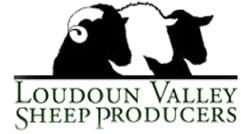Gotland
Gotland sheep are fine-boned and of medium size. Gotlands are polled and have no wool on their black heads and legs. Sometimes there may be white markings on the top of the head or around the nose and mouth. They have alert medium-sized ears that stand outwards with a small neat muzzle, an even jaw and even teeth.
Read MorePolypay
The Polypay sheep breed is a white, medium-sized (65 kg), polled sheep which was developed in the 1960s at the U.S. Sheep Experiment Station in Dubois, Idaho. In general, Polypay sheep are noted for being a highly prolific maternal dual-purpose (meat and wool) breed.
Read MoreTunis
The Tunis is one of the oldest sheep breeds, said to have roamed the hills of Tunis and parts of Algeria in North Africa prior to the Christian era. The American Tunis evolved from a number of importations of fat-tailed sheep from Africa and the Middle East that were crossed with established European breeds to improve the breed’s meat characteristics.
Read MoreTeeswater
The Teeswater is a breed of sheep from Teesdale, United Kingdom. It is a longwool breed of sheep, which produces a generally large-diameter fibre. The breed is raised primarily for meat.
Read MoreShetland
The Shetland is a primitive, unimproved breed noted for its natural hardiness, lambing ease, longevity, and ability to survive under harsh conditions. It is one of the smallest breeds of sheep.
Read MoreRomney
Romney is truly a versatile breed, as demonstrated by its ability to produce quality meat and wool under diverse climate conditions and management systems. It is so-named for the Romney Marsh region in Kent, England where it was developed as a dual purpose sheep.
Read MoreFinnsheep
Finnsheep or Finnish Landrace, as they are known in their native country of Finland are considered to be several hundred years old, descending from the Mouflon that live in the wild on Sardinia and Corsica and also said to be related to other Scandinavian short-tailed sheep.
Read MoreCotswold
Cotswolds are a large breed, noted for their long, coarse fleece of naturally wavy curls and the tuft of wool on their foreheads. The earliest record of Cotswolds in the United States is 1832. The Cotswold is classified as a “rare” breed by the American Livestock Breeds Conservancy.
Read MoreCorriedale
The Corriedale is the oldest of all the crossbred wool breeds, a Merino-Lincoln cross developed in Australia and New Zealand and first brought to the United States in 1914. It is large-framed, polled with good carcass quality. Their dense fleece is medium-fine and high yielding, with good length and softness, somewhat between medium wool and long wool.
Read MoreCheviot
The Cheviot is a long-wool type, hornless and of reasonable frame. Cheviot wool has a distinctive helical crimp, which gives it that highly desirable resilience. Cheviot wool is often blended into other yarns to give resilience and durability to the finished article. The fleece is dense and long-stapled, of 56s-50s quality, and springy to the touch.
Read More